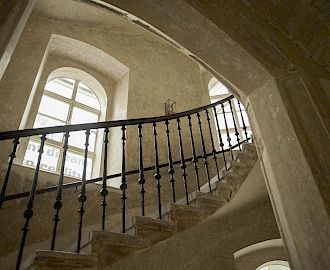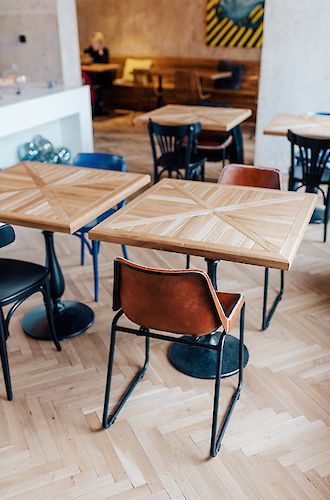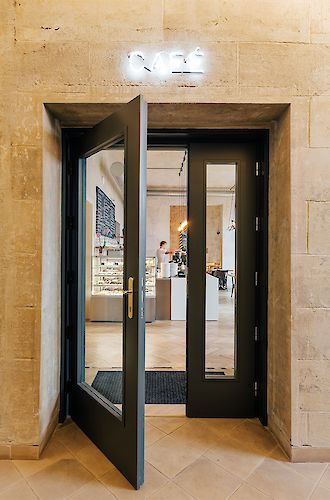O nás
Historie
Rekonstrukce
About Us
The SMETANAQ house at No. 4 Smetanovo nábřeží is a place at which people come together who have a shared interest in art, culture and design. On the third floor of the house is the SMETANAQ GALLERY, a setting for exhibition openings, lectures, workshops, fashion shows and press conferences.
Under one roof, young designers of various specializations also create and present their works together. Located in front of their studios on the first floor, in 2019 a shared SMETANAQ SHOWROOM space was created here for a unified presentation and sale of their work.
On the left side of the first floor of the house is the DEELIVE DESIGN STORE, which offers the work of some of the best of young Czech fashion and interior designers, including our own in-house designers from the Bottega project.
It is not only lovers of art and design who are invited to visit the SMETANAQ CAFE & BISTRO. For inspiration and new ideas, you are welcome to come with friends or meet with our designers. The café on the first floor serves quality coffee and excellent desserts. You can also have breakfast or spend the afternoon enjoying one of the most beautiful views of the Vltava River, the Prague Castle and the Petřín Hill.
In 2020, the FASÁDA gallery was opened, which transforms the explosion-damaged part of the SmetanaQ House in Divadelní Street in an extraordinary way. Its goal is to promote contemporary Czech art and to revive the place not only with the exhibition itself, but also with artistic performances in dialogue with this unusual space.
HISTORY OF THE HOUSE
The classical-style townhouse flats were built on the right bank of the Vltava River between the years 1846 and 1847 to a design by the architect Bernhard Grueber. At that time, the waterfront had a natural character with grassy, sandy banks gently sloping to the river. The riverbanks were punctuated by the homes of fishermen – one could see the nets put out to dry and the floating logs stacked on the river bank. In place of the present-day building was the ferryman’s lodge bearing the postal address No. 334. The same postal number was later transferred to the new house and has been preserved to this day. The house on the southern side has a trapezium-shaped ground plan owing to its bordering on a large natural cutting in the river bank in earlier times. The cutting provided a natural dock for the local brickworks and later disappeared after adjustments to the waterfront. Today the Lažanský Palace stands in its place, along with the AMU Film and Television Faculty.
The building was originally conceived as an apartment house. During the course of the 20th century, it was reconstructed several times and turned into an office building. Previous owners of the house include V. J. Rott, the Prague Steamer Company and the Czech Air Traffic Control Authority. Zdeněk Sklenář’s famous gallery was among the tenants.
Reconstruction
In 2013, the building was damaged by a huge explosion on Divadelní Street. The blast destroyed the load-bearing masonry and part of the ceiling on the ground floor of the Divadelní Street wing collapsed. The original owner made the house safe and secure through expensive repairs and then sold it. At present the part of the house on Smetanovo nábřeží has been completely reconstructed; the part on Divadelní Street remains inaccessible and it is still unclear when it will be possible to make full use of it.

During the reconstruction, we dealt with the insensitive interventions of previous decades. We removed all the plasterboard on the ceilings and walls to reveal the beautiful palatial features of the original Burgher house. At the same time, we uncovered remnants of the original paint, which we later incorporated into the overall interior design. The author of the reconstruction of the main premises of the house is the Qarta architectural bureau. Petr Hák's studio created the interior of the Deelive Design Store, while all the furniture in SmetanaQ Bottega and SmetanaQ Gallery projects is the work of the Kovopo studio. The lighting features in the building are from the Czech glass factory Bomma; in the lobby, there are beautiful chandeliers from the PRECIOSA glass factory. The neon signs were created by the Davis & Miller studio.



